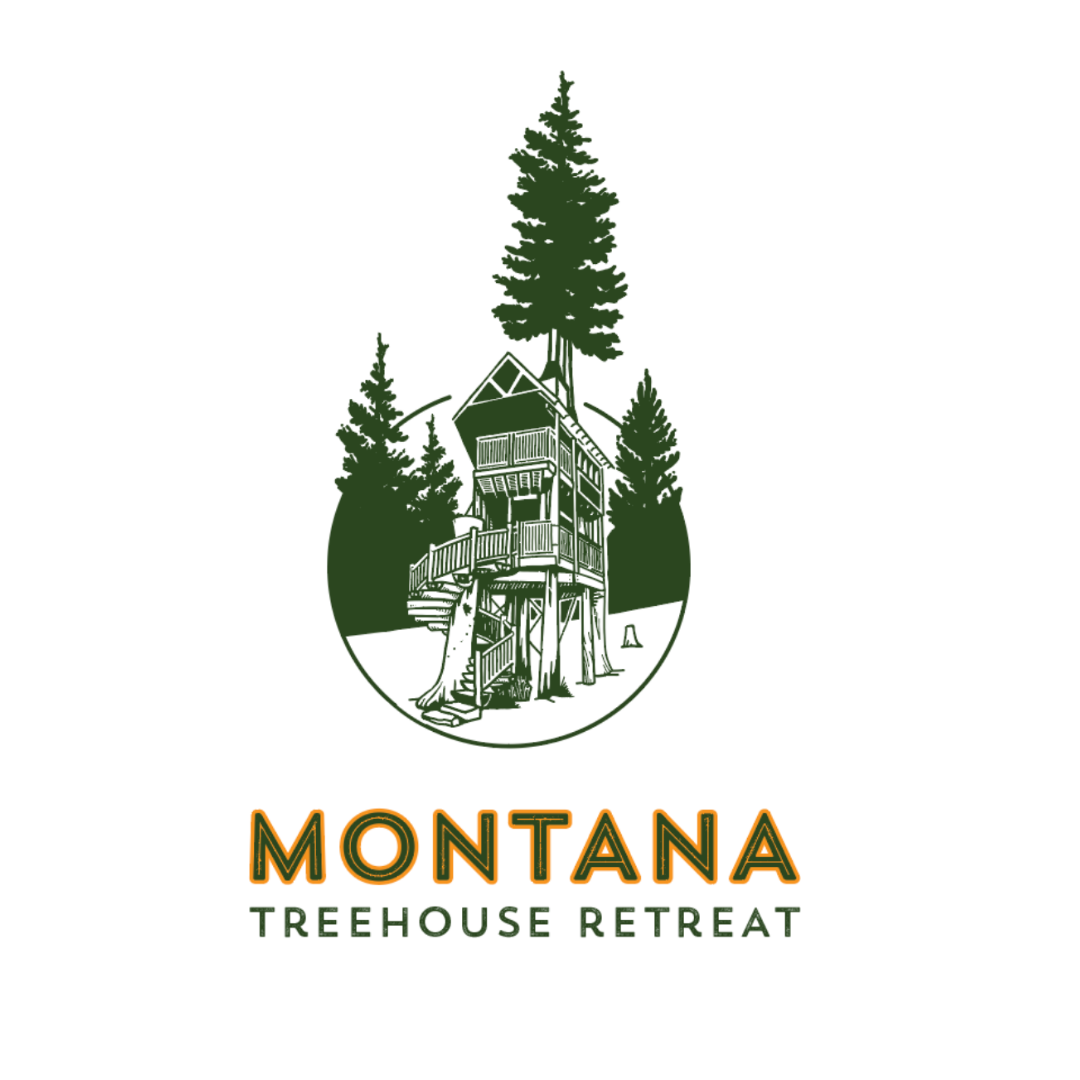The Montana Treehouse Retreat's first treehouse just wouldn't be complete without the grand entrance of the spiral log staircase. This masterful work of art was constructed by local craftsman John Colliander of Treeworks Log & Timberframe Construction.
Based out of West Glacier, John was eager to hop onto the project. We knew he was the man for the job of taking Darin's elaborate concept and putting it into action!
Check out his epic staircase that was built around "Grandma Mary's Tree" that Darin excavated/harvested and trucked up to the site from Echo Lake, MT. Here are a few words from the man himself:
How did you become interested in log work and timber framing?
I became interested in log and timber work at a young age. I am a 4th generation builder (just learned that my great grandpa was a staircase builder from Sweden), which if nothing else made me realize that if you can dream it... it's buildable.
I can remember growing up in Oregon dreaming, as kids will do, about having a cabin deep in the woods, secluded, and built of logs. Before I even knew what I really meant I was telling people that I would someday live in the woods in Montana. I can't recall even once thinking that someone else would build this for me, building it myself was always a part of the plan.
My mother and I moved to Montana when I was 16 after my parents divorce and my siblings were both out of the house. Finishing high school in Polson then trying my hand (for a short time) at North Idaho College, I realized that this was not a good match for my mindset.
The following years I traveled the western US extensively with just a backpack and my thumb as well as South America, New Zealand, and Australia- slowing down in places like Bozeman, Whitefish, and finally West Glacier where I gained work on a trail crew for 3 summers in Glacier National Park.
During this time I honed my skills working with chainsaws and hand tools as well as continuing to dream of a life in the woods. Glacier's beauty was undeniable and as my world travels had made obvious, increasingly rare. After my third season in GNP I took my first job with a log home builder in Whitefish. I realized almost immediately that I had a knack for working with these raw materials. My skills excelled quickly for the next few years, working for various contractors until the recession of '08 drained most of the work from the valley.
About the same time I began to raise a family and found myself dreaming again about living in the woods in a home I built. The experience that I gained while working for various other builders was just enough to give me the confidence that I could execute my dream. Towards the end of the summer of '08 I purchased land and began construction of my own home in West Glacier.
After completion of my home I realized that there was still a shortage of work. I came to the conclusion that no one was going to be able to put me back to work so I simply began finding my own. In the beginning I was mostly getting small jobs, handrail, accents, decks, staircases, mostly the things that the bigger contractors didn't care to do and often complicated things that they could not do. Over time these jobs began to grow in size and scope. I now find myself building other peoples dreams.
How long has your business Treeworks been up and running?
I have been self employed for 9 years. I'm in a very comfortable niche within the building community in the Flathead Valley. I pride myself in building small custom homes and accents with rustic features but modern amenities.
I find myself working in amazing, beautiful, often secluded locations because that is where my building style fits. My clients tend to be drawn to dramatic wooden features throughout their home or property. I continue to offer one of a kind homes, barns, accents and features that sometimes seem to extend beyond the realm of possibility.
What is the most rewarding part of your work?
Being a log builder is amazing in part because it allows me to help people who, like myself, have dreamt of living in a log home- achieve their goal. There is no better feeling than having a client be overwhelmed by the realization of their dream. It is also a very rough, heavy sort of work but seems to always be just on the verge of art.
The visual aspect is always heavy on my mind, which is where the work/art interface seems to take place. I like to think that I have an eye for the right log or the right location for specific logs that goes beyond the structural needs of the building but has a large visual impact. In part this is what divides my building style and others.
How did you get involved in the Montana Treehouse Project?
Darin and I have known each other since our Polson High School days. As kids grow up it is increasingly difficult to maintain all of your childhood friendships. Only some of them will stand the test of time.
Darin and I have always been able to connect on multiple levels. I worked with him for Ace Landscaping when they were still unlimited (haha). I often found myself crashing on his couch while he was in school in Bozeman, we spent much time together exploring the Mission Mountains. As adults we found ourselves living near each other in the Flathead Valley and able to continue our friendship into our professional and family lives. Darin and Kati are now some of my wife and my best friends enjoying as much time together as our busy lives allow.
When the idea for the tree house arose, I found myself almost as excited as D&K. Their artistic ideas and relentless drive I found to be very inspiring. It almost makes a guy feel like a kid again trying to figure out how your going to get a 4x8 sheet of plywood to the top of a tree. The challenges of this particular tree house were of a fairly different degree than those I encountered building in trees as a kid.
How did you dream up the idea of the log spiral staircase?
The idea to build a spiral staircase, was one of the original ideas Darin and I came up with while talking around the campfire. It was something that I had executed only in small scale but I knew that it was possible. As the building moved from dream to reality, some of our original ideas were found to be a little far fetched, but we maintained the vision of a grand entrance via a very dramatic staircase. I can still remember Darin mentioning the tree in his cousins yard that he could dig up for use as the center post, and me being a bit dismissive about the reality of it actually arriving on site.
I can also remember my reaction to the picture he sent when it was dug up and loaded onto his trailer...wow. As soon as it was decided to use this huge, crooked, knotted up, piece of Douglas Fir I knew that I had my work cut out for me.
What was the biggest challenge of the log spiral staircase for the build?
A spiral staircase built around a perfectly smooth, dried piece of wood is challenging enough but to maintain uniform tread heights and layout on a rough piece of wood like this was a whole different ball game. In the end the process was the same, the large diameter actually helped me be able to spread out the steps a bit and the knarly character of the log only added to the amazing visual impact of the piece.
What was the step by step processing of tackling such a huge staircase?
Once the log was on site, it needed a lot of work just to get it ready for placement and the treads to be added. Fortunately for me, Darin was willing to undertake the removal of the bark which I can guarantee was no easy task.
After this we needed to have a flat surface across the bottom of the log for it to sit flat on its foundation. The diameter of the root wad was roughly 6 feet. In order to remove the majority of the root ball and leave the flared bottom of the trunk it would take a big saw and a great cut.
This was about the time that the camera crew showed up (to film the first day of the Treehouse Guys for the DIY Network) and really put the pressure on. I have made a lot of difficult cuts with a chainsaw in a lot of different circumstances, but never like this. The cut went better than I could of expected and supposedly there is film to prove it. After the bottom cut was made the log was put in its final resting place by crane and the beams were attached to support the deck for the tree house.
While the Treehouse Guys began work on the building, D and I picked the treads and moved them to my yard to begin the milling process. The logs that we chose were all from the butt (bottom) portion of the tree. In many circumstances this part of the tree is deemed unusable due to its variable grain pattern and dense impenetrable wood structure. But for this project they were perfect.
We found many pieces with a very tapered shape perfect for the circular pattern of the steps as well as many character pieces that we just liked the look of. The dense wood grain and green (wet) nature of these pieces proved again to be an added challenge to the project, but in the end, well worth it. The treads were milled and moved to the site and the real fun was set to begin.
Each tread is actually held in place by a large tenon that extends into and almost through the main post. All together the treads were about 6.5 feet long and weighing roughly 300lbs. In order to locate the placement of each tread I placed layout on the top of the log and extended the lines down to intersect with the proper height of each piece.
After this I cut a 20" mortise into the center post to match the size and shape of the tenon on the corresponding tread. After the mortise was complete I was able to place the tread and scribe it to fit the contour of the center log. At this point the decision was made to add the all-thread through the center of each tread not only to help keep the treads true and level but to allow for the tightening of the treads that may work loose over time.
In addition, the look of the all-thread and malleable washers played right into the overall look of the tree house with multiple metal features. This added feature was not only extremely difficult to pull off (drilling a 6-7 foot hole with both exposed ends in a pin point location) but the process of its execution became one of the most commonly asked questions that I received.
This process was repeated 19 times until reaching the exact height that I set out for and finally being able to access the tree house without a ladder. As I worked my way up and out of comfortable working height I implemented the use of my skid steer to lift and move the treads in and out of their locations until they were ready to be permanently attached.
What is the most rewarding element of this project?
This was hands down my most enjoyable project to date. Not only was I able to help my friends achieve their dream, but I was repeatedly showered with not only wonder in the work but praise for its outcome. This project was physically and mentally demanding throughout its entirety but in the end it was amazingly gratifying not only to see a dream realized but to know personally that I can rise to a challenge like this and not disappoint.
I have built a lot of cool things in my career that will only be seen by a select few, but to have some of my most amazing work appreciated by my own community and friends, as well as the opportunity to show a national audience what a hillbilly from West Glacier can do, is something that I never thought possible.
more Pictures from The STAIRCASE Build:









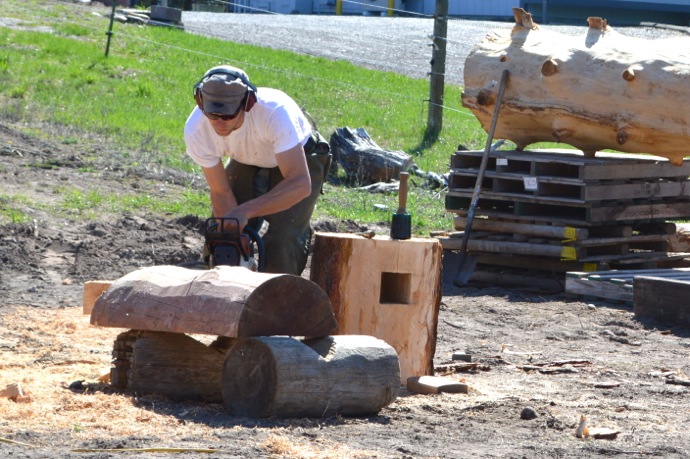



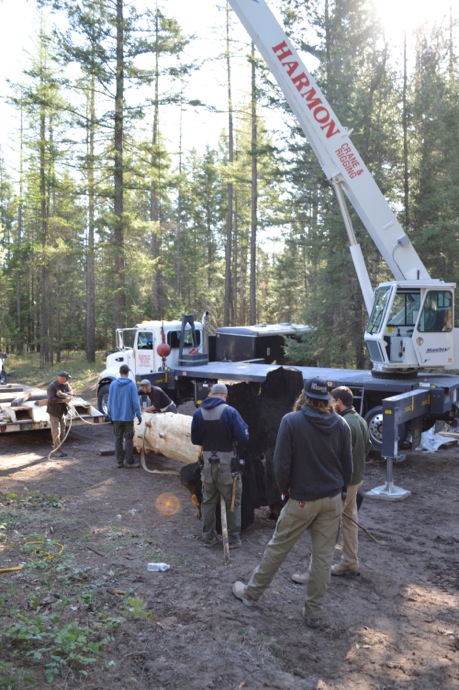
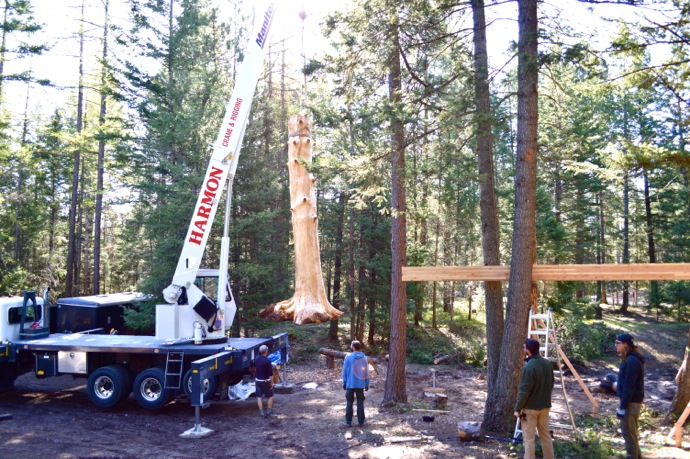
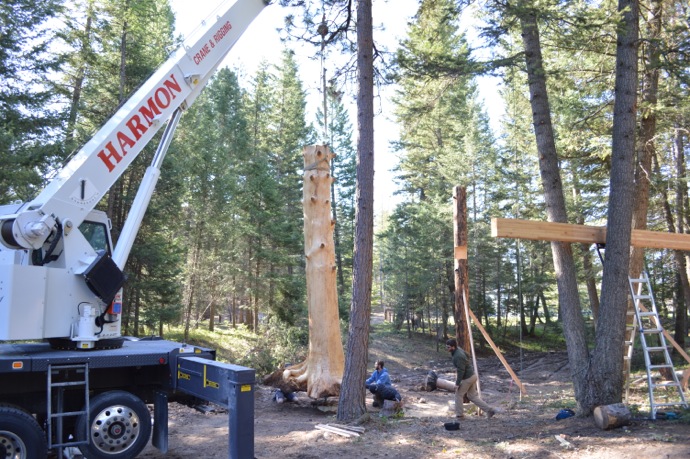
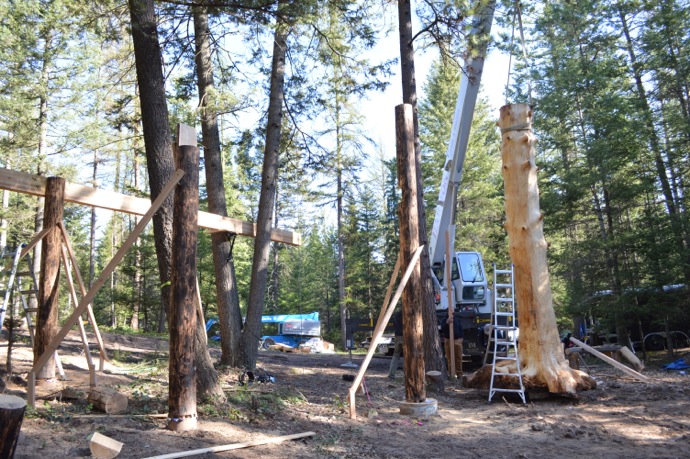
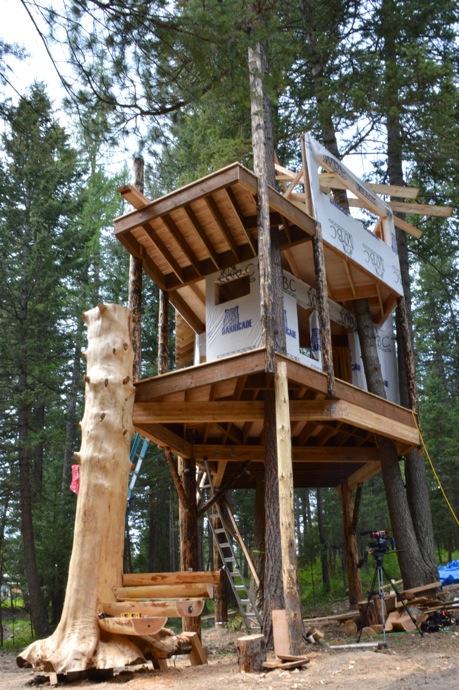
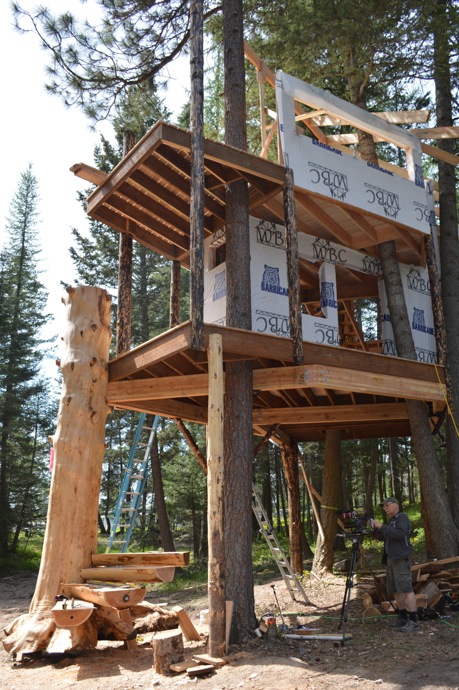
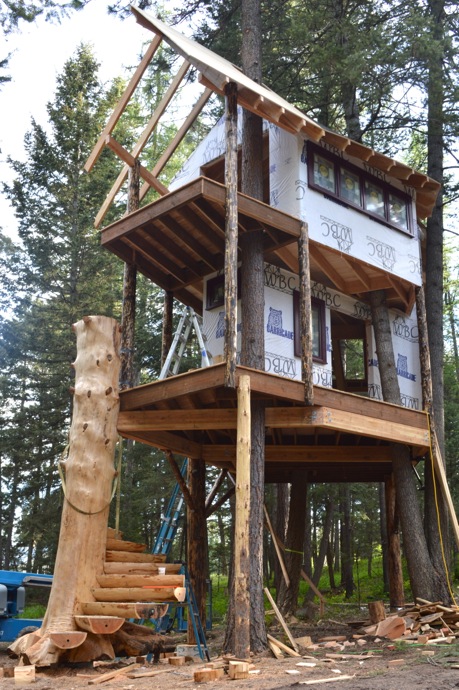
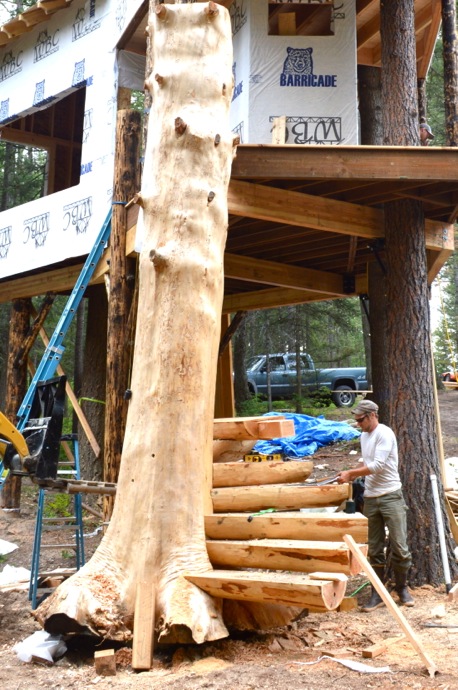
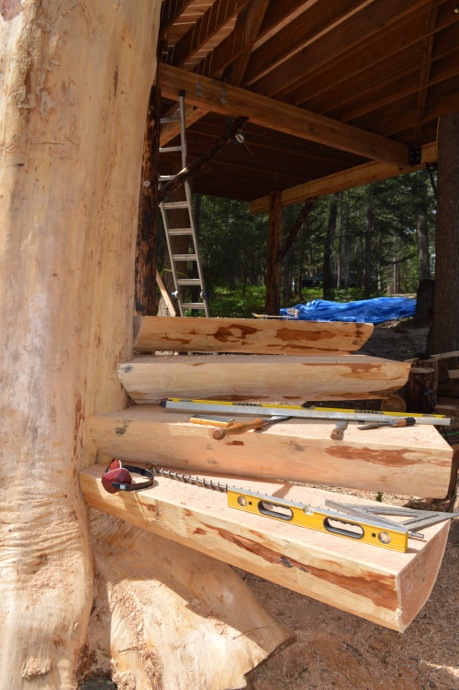
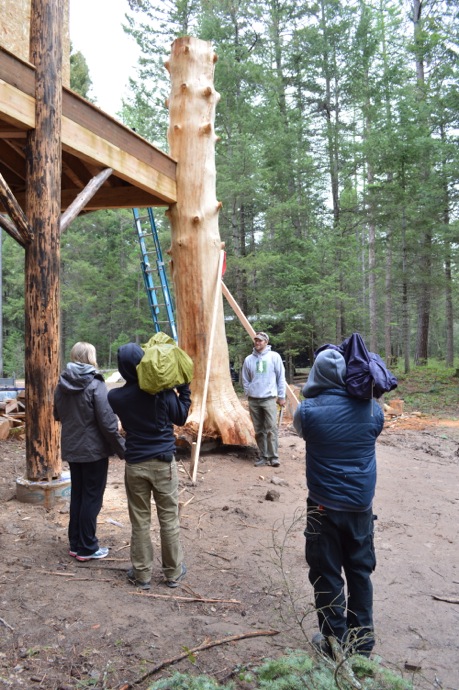
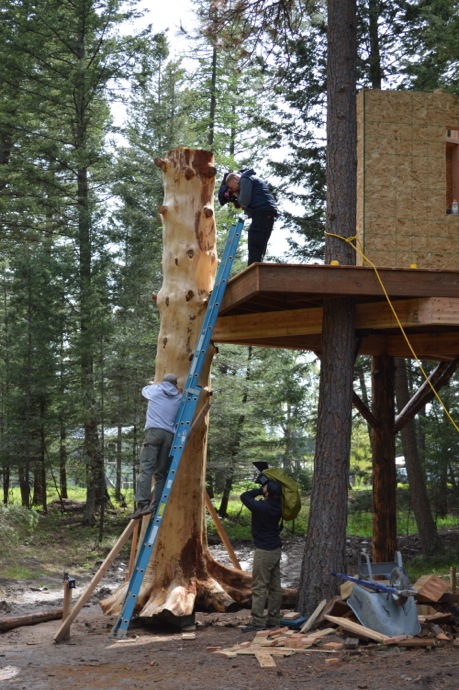
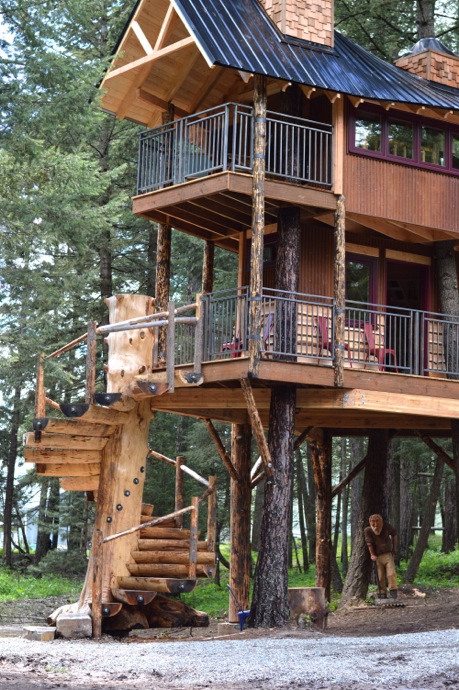


What's the best way to reach you if one was interested in hiring you for a custom project like this?
Hit me up at...http://www.treeworksmt.com
Pssst...we at The Montana Treehouse Retreat highly recommend him (if that isn't clear enough already) -Darin and Kati
